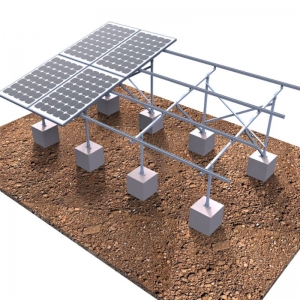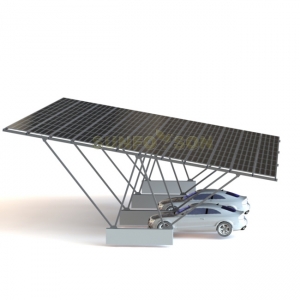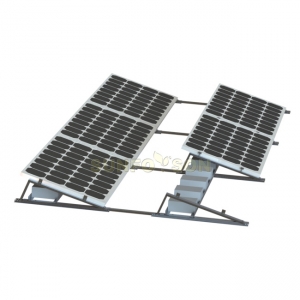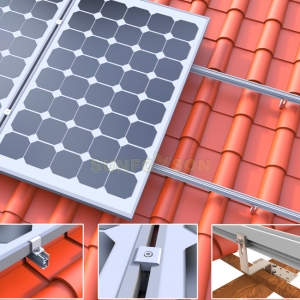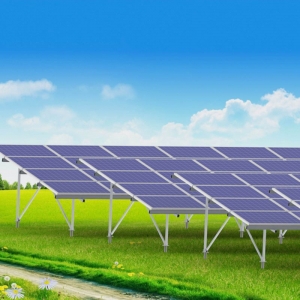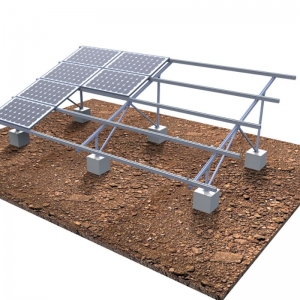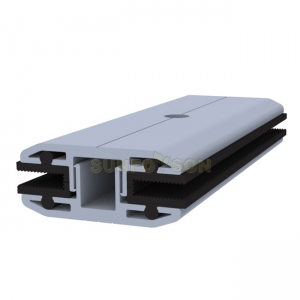There is an old saying in China that relies on mountains to eat water and water. Then the Sahara wants to seek development, and naturally depends on the sun.
A study from NASA shows that the Sahara Desert has great potential in the energy sector, with about 2,000 to 3,000 kWh of solar energy per square meter per year. The total desert area is about 9.06 million square kilometers, which means that if every inch of the desert can absorb solar energy, the total energy available will exceed 22 billion kWh per year (GWh).
This huge and enticing figure represents that if the Sahara Desert is built into a solar farm, it will generate more than 2,000 times more energy and will solve more than 7,000 times of European electricity demand without any carbon emissions.
Since the Sahara Desert is very close to Europe, the shortest distance between North Africa and Europe is only 15 km (Strait of Gibraltar), but even the width of the Mediterranean Sea is much closer than the underwater cable of nearly 600 km between Norway and the Netherlands. Therefore, the development of solar power in the Sahara has naturally achieved a good market.
With resources, there is a market, and the rhythm of a hit is right. But as early as 2009, there were companies that announced plans to try solar energy. The project received a lot of money from a number of banks and energy companies, but most investors quit five years later and the project basically collapsed.
Obviously, although the development of solar energy in the Sahara region sounds fashionable, it is not enough to have the sun. In order to prevent the "new energy farm" from becoming a "cemetery" for solar panels, it is more important to solve the crux of those resources.
The reasons behind the failure of the project are complex, such as the instability of the regime, the slow development of the region itself, and so on. However, excessive blame on political and economic factors is easy to fall into the grand narrative but it is not in the circle of solving problems.
In our view, the development of solar energy in the Sahara region may need to focus on key issues in several industry chains:
1. The key role of infrastructure.
We know that a solar farm can only be truly transformed into commercial value when it produces electricity that reaches the homes and factories that need it. To solve the problem of energy transmission, it is necessary to build a so-called super grid to transport electricity to a long distance, ensuring that no power is wasted, but it becomes quite expensive. For example, in order to solve the energy infrastructure problem, China is proposing a power grid plan connecting China, South Korea, Russia and Japan. However, not every country is a “foundational madman”, which is one of the crux of the frustration of solar energy development in the Sahara region.
2. Continuous supply of industrial labor.
Due to the large size of the Sahara Desert, it is easy to accumulate dust, and the equipment needs cleaning from time to time. At the same time, how to place solar equipment, reasonably adjust the direction of the placement, the angle of the slope, etc., from the use to maintenance are more professional skills. However, the overall quality of the African labor force is insufficient, the company lacks manpower, and it is worried that laymen will damage the equipment. Unscientific operations affect the efficiency of power generation and cannot significantly improve the problem of lack of energy. The project over time is naturally abandoned.
3. Commercial possibilities for large-scale operations.
Solar panels are one of the core costs of the project, and only large-scale operations can effectively save money. In the absence of financial assistance, strong businesses are often required to operate. The large-scale solar farms currently being built are often not owned and operated by a public utility company, but are operated by dozens of companies to achieve economies of scale and efficiency. For regions like Sahara, it is obviously not an easy task to attract enough companies to participate in the cooperation and make solar power costs economically justified.
However, many countries are now involved in solar energy development in the Sahara. In addition to the European projects and companies mentioned above, as early as 2013, the Obama administration proposed the “Power Africa Program”, which plans to provide 7 billion US dollars of funding for sub-Saharan African countries within five years to help them develop the solar industry. . China is no exception, and the BRICS New Development Bank, one of our core members, plans to use two-thirds of the loans from the Africa Center for sustainable development such as clean energy and clean water. Under the conditions of this "eight-party support", the solar industry's stamina in the Sahara region is still worth looking forward to.
At the same time, this explains more or less, why we need to pay attention to the early development of energy resources in the region. On the one hand, except for the more developed countries such as Egypt and South Africa, there are power supply problems in other countries and regions. The extreme shortage of power resources also means huge market space. A small part of the Sahara can produce as much energy as it does on the entire African continent. As technology advances, the future will become cheaper and more efficient. The sooner you participate in nature, the more likely you are to dig into the “first bucket of gold”. On the other hand, the international competition around energy production has developed to a degree of enthusiasm. China is planning to build a 2 GW solar power plant in Ningxia, and Gujarat in western India has also approved a five megawatt plant. Japan, which has poor ground conditions, plans to build a large solar power station in space. The huge reserve of resources in the Sahara region has naturally become a strategic location for the military.
Of course, for many companies eager to get rid of the sun, the desert is not a safe haven. Before the key symptoms are not right, the trade rushed into the market, I am afraid I still have to be careful not to repeat the mistakes of my predecessors.












